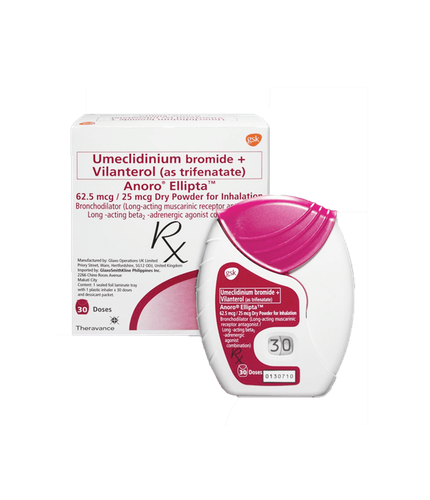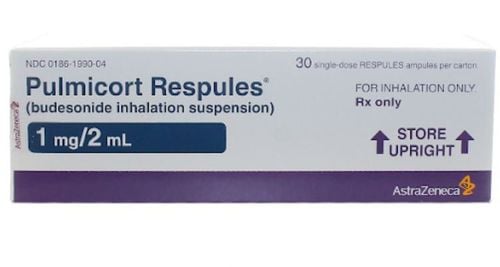This is an automatically translated article.
Article written by Doctor Tran Thi Diem Trang - Respiratory Internal Medicine Doctor - Department of Examination & Internal Medicine - Vinmec Central Park International General Hospital
Asthma is a chronic disease and is common in many subjects. The proactive planning will help the patient control and provide effective treatment as well as reduce the risk of affecting health.
1. Recognize the first signs of an asthma attack
1.1 Before an asthma attack, there are alarm symptoms Patients have small signs before a real asthma attack. These signs vary from person to person, but rarely varies from person to person. Small symptoms that people with asthma may experience such as:
Cough Tiredness Itchy eyes, watery eyes Runny nose Itchy throat, sore throat Sneezing Headaches Children's behavior changes Color of face Dark circles around eyes Decreased peak expiratory volume The patient needs to distinguish and recognize these signs. Depending on the severity of the case, the patient may need to inhale a rapid-acting bronchodilator, monitor peak flow, or both.
1.2 Signs to think about asthma Some common signs that you need to think about bronchial asthma include:
Cough Shortness of breath Wheezing Heaviness in the chest
Cough symptoms are sometimes mistaken as having nothing to do with asthma. The cough of an asthmatic is a dry, intermittent cough that occurs in the middle of the night or during exertion. Sometimes the cough occurs during the day, coughing with sputum, not related to any obvious trigger. Failure to recognize coughing as an asthma symptom can easily lead to a diagnosis of bronchitis and to taking antibiotics that are completely ineffective against asthma. If you have a persistent, chronic cough, whether accompanied by wheezing or difficulty breathing, you should seek medical attention for asthma. Shortness of breath is often "visible" only with exertion. During an asthma attack, the patient has difficulty breathing because the bronchi are constricted. You can hear hissing in the chest. That whistling sound is caused by the air moving in the narrowed bronchi. Shortness of breath can last a few minutes to a few hours and then turn into a pattern of "bronchitis" with coughing up phlegm for several days. Some patients do not feel a blockage in their bronchi. In these patients, peak flow measurement can help detect the onset of an asthma attack; during an asthma attack, peak flow is reduced.

2. Assess the severity of an asthma attack
An asthma attack can be severe at first (after a few minutes) or progress for several days and then get worse. There are 3 criteria that allow the assessment of asthma severity:
Degree of dyspnea Responsiveness to bronchodilators Peak flow value, if measured The degree of dyspnea is assessed in two ways: ability exercise physical exertion, or the ability to finish a sentence without needing to take additional breaths. In children, a concave neck during inhalation is a sign of severity. In infants, exertion is the time to suckle. Infants who can suckle without fatigue do not have much dyspnea. The effect of asthma treatment on dyspnea and peak flow (if measured) values should be evaluated. The sign of a severe (or worsening) asthma attack is that treatment is not working.
3. Know how to manage an asthma attack
You can refer to the following management chart according to the intensity of the asthma attack:
3.1 Mild or moderate attack when all of the following criteria are met Cough, wheezing, shortness of breath only with activity, not at times rest. Patient sleeps peacefully. Take a quick-acting bronchodilator and feel much better. Peak flow measurements are found to be above 50% of normal and increase to more than 80% after inhalation of a rapid-acting bronchodilator. Treatment: In this case, the patient can immediately inhale 1-2 puffs of a fast-acting bronchodilator, can inhale more after a few minutes if it is not better. If you find that you have inhaled such a fast-acting bronchodilator, but your shortness of breath does not go away or worsens, follow the instructions for severe cases. In case of anxiety need to go to the hospital to be checked promptly.
3.2 Severe attack (1 criterion is sufficient) Shortness of breath that does not decrease or worsens despite inhalation of a rapid-acting bronchodilator Difficulty breathing even at rest Unable to complete sentences without taking additional breaths In a child infant: unable to suckle without taking breath hospital immediately. In the meantime, quickly intensify treatment, especially immediately take corticosteroids as directed by the doctor and inhale a fast-acting bronchodilator again.
3.3 Very severe attack (1 criterion is sufficient) Peak flow is found to be less than 33% of normal and does not rapidly increase to 80% following inhalation of a rapid-acting bronchodilator.
Purple lips Sweating Confusion Confusion Exhausted, unable to sit, unable to speak. Treatment: Call an ambulance immediately. In the meantime, quickly intensify treatment, especially immediately taking corticosteroids as directed by your doctor and re-inhaling a quick-acting bronchodilator.

4. Avoid situations that are prone to asthma attacks
For a long time, asthma treatment was limited to treating asthma attacks. Nowadays, in the case of persistent asthma, it is possible to provide preventive treatment by implementing disease-control treatment to prevent attacks. It is important to distinguish between treatment for disease control and treatment for seizures. Treatment of an asthma attack is the treatment of an asthma attack in order to make the patient more comfortable quickly by widening the bronchi. In the case of persistent asthma, we must treat the disease to control the disease, treat it every day even if there are no symptoms, to control the disease and avoid attacks. This treatment not only reduces the number of attacks, but also reduces anxiety and improves the patient's quality of life. To avoid asthma attacks and maintain a good quality of life, understanding the disease is essential. Particularly important are:
Identify asthma triggers to avoid. Understand the effects of medications and take regular control treatment every day. Initiate prophylactic treatment in certain risk situations: for example, inhaling a rapid-acting bronchodilator prior to physical exertion. Recognize the first signs of an asthma attack and get treatment quickly. Assess respiratory status as symptoms worsen and seek medical attention immediately if necessary. If necessary, you can contact your doctor to be checked and have appropriate indications to better control the disease in people with asthma.
Respiratory - Allergy and Clinical Immunology Unit at Vinmec Times City International Hospital was established and expanded with the desire to provide professional services with high expertise for medical examination and treatment. respiratory, allergic and autoimmune diseases.
Unit brings together professors, doctors and specialists with more than 30 years of experience, well-trained young doctors in advanced countries who are always ready in the work of examining and taking care of people. sick. In addition, the Unit is equipped with the most modern equipment and machinery in Vietnam to support the diagnosis and treatment of diseases.
Especially, with bronchial asthma, patients are measured FeNO to support early diagnosis of asthma. This is an effective monitoring tool for asthma management, treatment, and prognosis of acute asthma attacks (only address in the North). In addition, with the desire to work with you to control asthma, the Asthma Club is opened regularly to supplement knowledge, help patients exchange knowledge with leading experts in Vietnam and the world about asthma. asthma. Currently, the Unit has professional cooperation and scientific research with hospitals and universities in Australia, the United States and France.
Respiratory unit - Clinical immuno-allergy is currently becoming a reliable examination address for many customers because when coming to the clinic, the patient will be examined and thoroughly consulted by the doctor about the disease and treatment plan. Patients are also provided with comprehensive supplemental information about the disease.
Please dial HOTLINE for more information or register for an appointment HERE. Download MyVinmec app to make appointments faster and to manage your bookings easily.














